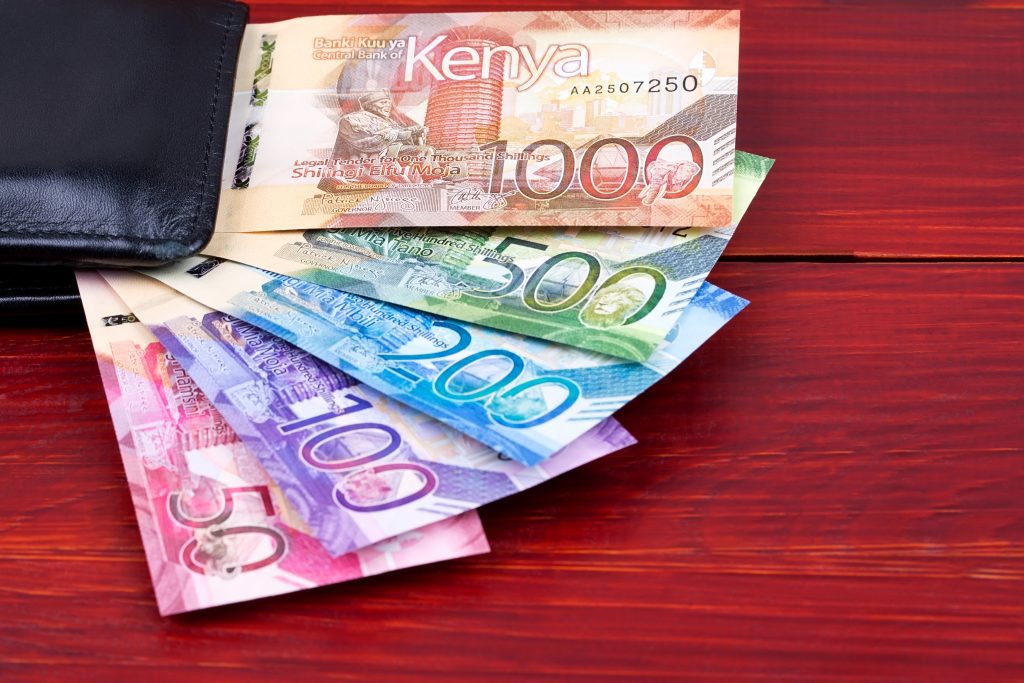Global Courant 2023-04-14 04:29:06
The Kenyan shilling has been declining almost constantly for almost three years now – with little sign of any short-term recovery.
In February 2020, just before the outbreak of the coronavirus pandemic, the shilling was trading at 100.60 against the US dollar. Since then, the greenback is up 33% to 133.77 at the time of writing in mid-April 2023. The declines have become particularly steep over the past 12 months, during which the shilling has lost nearly 15% in value. Why is the Kenyan currency doing so badly?
Many emerging market currencies, including the shilling, have been hit by the global rate hike led by the US Federal Reserve. With inflation reaching 9% in the US last year, the US central bank quickly moved to raise interest rates in an effort to bring prices back under control. Interest rates in the US, which were practically zero during the pandemic, have risen significantly over the past year – with the Fed’s new target range between 4.75% and 5%. The European Central Bank (ECB) has walked the marginal lending rate at 3.75%.
This has caused major problems for the shilling. Higher rates on the US dollar, also considered one of the world’s safest financial assets, have helped make the currency even more attractive to currency traders and further dampened the appeal of holding riskier currencies such as the shilling. While the Central Bank of Kenya (CBK) recently increased rates by 75 basis points to 9.5%, in part to support the shilling’s appeal, this will probably not be enough to halt the currency’s decline.
Shilling becomes less attractive
Charlie Robertson, global chief economist at Renaissance Capital, an emerging-markets-focused investment bank, tells African Business that the CBK’s move “means Kenya has only raised rates by 250 basis points (bp) since 2021, while the Fed has raised rates by 475 bp has increased. and the ECB raised interest rates by 350 basis points. That’s still a difference favoring the dollar or the euro over the shilling. Since October, the Fed has raised 175 basis points and Kenya by 125 basis points.”
As “the gap between Kenyan interest rates and US and European rates has narrowed”, the shilling has become less and less attractive, sending the currency into a downward spiral of depreciation.
The shilling was also impacted last year by the uptick in global economic activity as countries began to open up again after several coronavirus lockdowns. This further drove demand for the international trading currency, the dollar, and led to relative declines for currencies such as the shilling. Felix Ochieng, market analyst at Nairobi-based fintech Hisa, tells African Business that “the sudden global growth in demand for the dollar created a survival of the fittest scenario.”
“Developed economies have more influence over dollar access,” Ochieng explains. “This means emerging markets will have to pay more, which means the value of the dollar will be higher and the shilling will be weaker.”
Forex problems
This dynamic has also contributed to the shortage of US dollars that Kenya is currently experiencing. The country’s foreign exchange reserves are now close to one decade low and are insufficient to cover four months’ imports.
A stronger dollar has also led to wider economic problems, which have weighed on the Kenyan shilling. Higher interest rates in the US mean interest payments on dollar-denominated debt become more expensive. A weaker shilling makes it twice as expensive to pay off debt in dollars. As Edwin Dande, CEO of Cytonn Investments, an investment management firm based in Nairobi, points out, “more than half of our foreign debt is denominated in dollars, $2 billion of which is due in about a year.”
The fact that repayments are getting more expensive – and investors fear Kenya may not be able to pay these debts – may push the shilling further down. The World Bank has warned that Kenya faces a high risk of default on its national debt, which stands at more than $73 billion.
Compounding these concerns is that despite the country’s economic challenges, the government continues to stick to costly spending policies such as President Ruto’s flagship Hustler Fund. Investors are concerned that the government is determined to pursue expensive policies at a time when Kenya is struggling to service its debts.
Anti-government protests spread
Partly due to the challenging economic climate, Kenya has also experienced a high degree of political instability in recent months, which has further increased the country’s risk profile in the eyes of international investors – and thus reduced demand for the shilling. Raila Odinga, who leads Kenya’s main opposition party, has consistently claimed that Ruto “stole” the election through fraud and voter suppression.
As the Supreme Court reaffirmed Ruto’s victory last September, supporters of Odinga have taken to the streets of Nairobi and other major cities in protests that sometimes turned into violent. Businesses have been forced to close due to fears of looting, dampening economic activity. Dande tells African Business that “with the continued mondamanos (demonstrations) things are likely to get worse given the disruption of business”.
While the Maanamanos certainly add to the risks associated with holding the Kenyan shilling, the protests also have the direct impact of cutting government tax revenues. Ochieng notes that “with businesses shutting down due to demonstrations, the Kenya Revenue Authority (KRA) fell short of its monthly revenue targets in February, and will certainly miss it again in March”.
Declining tax revenues will raise further questions about the government’s ability to pay its debts and finance its spending obligations. Dande believes that “we need to take steps to reduce government spending so that we are in a stronger fiscal position,” but there is little evidence that the government agrees.
Kenya faces economic challenges on several fronts – not to mention the prospect of drought and a potential humanitarian crisis more than 5 million people run the risk of not having adequate access to food and water. A weakening currency is also a factor in this problem. Kenya is a net importer and has a trade deficit of more than $1 billion a month, meaning that food imports, usually priced in dollars, are getting more and more expensive. Have food prices worldwide got up too due to the disruption of grain and wheat supplies in the face of the war in Ukraine.
The worst may yet come
There is a best-case scenario in which the shilling starts to recover and make sustained gains against the dollar – if conditions improve dramatically. Robertson says “a positive scenario of sharply declining US tariffs in Q4 2023, low oil prices, better tourism season and no draft” could stabilize the exchange rate at KSh135-40/$. In theory, a weaker currency could also have positive economic effects, such as encouraging more remittances in the diaspora and making industries such as tourism more competitive.
However, there are few signs that developments will unfold that way. Robertson notes that a “worst case scenario” where the government defaults on its debt could “weaken the shilling to 20-30% below its long-term average -168-182/$ by the end of 2023.”.
Will the Kenyan shilling manage to regain ground in 2023? Current circumstances suggest this is unlikely. The Fed remains on a stance with higher interest rates and has taken an aggressive tone in recent weeks. So the dollar remains strong. The moon tamanos continue. The government is still pursuing a high-spending policy.
In Dande’s words, “there’s not much good news on the horizon”.







